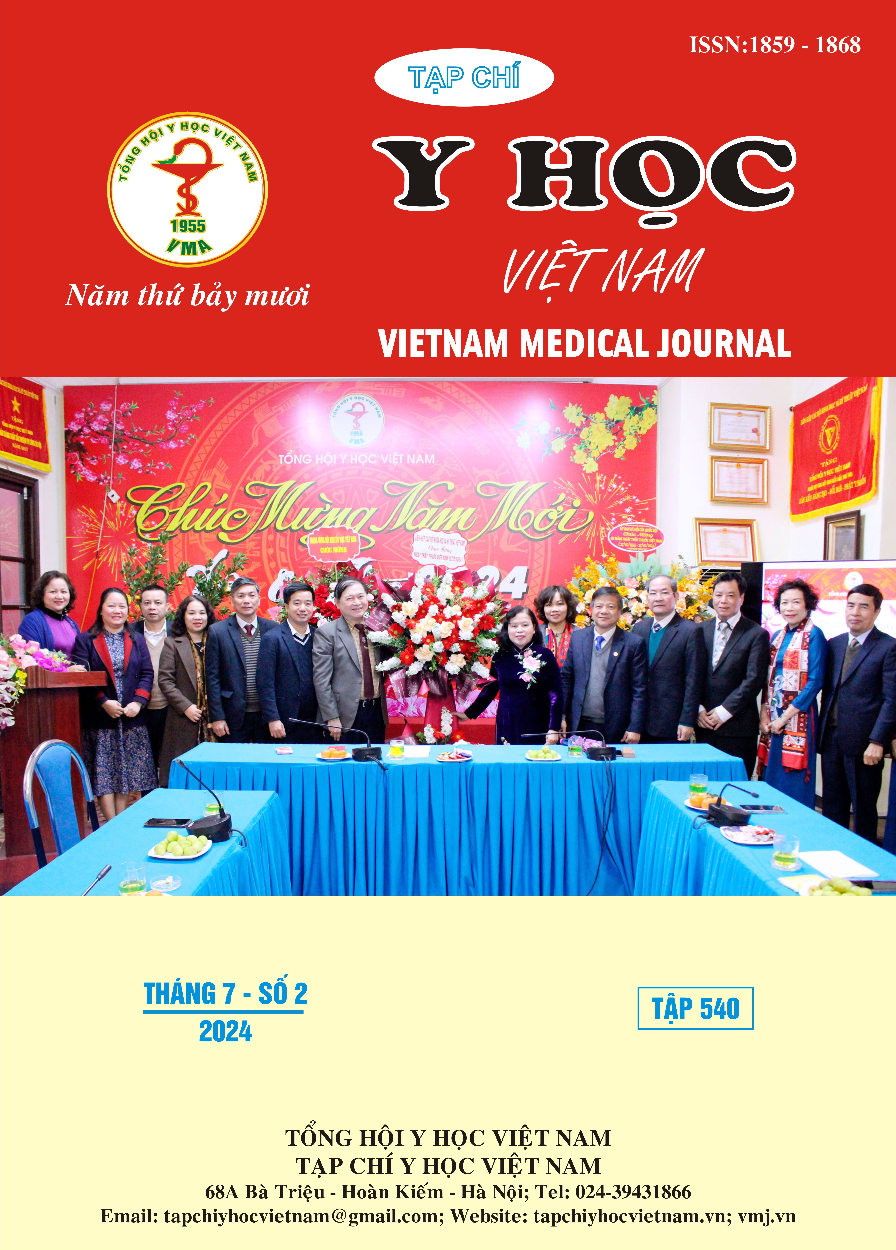INITIAL RESULTS OF TRANSRECTAL ULTRASOUND-GUIDED PROSTATE BIOPSY AT E HOSPITAL
Main Article Content
Abstract
Object: Evaluate the safety and effectiveness of transrectal ultrasound-guided prostate biopsy for patients treated at E Hospital from January 2023 - December 2023. Materials and methods: Descriptive cross-sectional study conducted on 98 patients with suspected prostate cancer at E Hospital from January 2023 - December 2023. Results: The study included 98 patients, and the oldest patient was 98 years old. Patient group with PSA > 10ng/ml has the highest cancer rate of 54.28%. Patient groups with PIRADS 4 and 5 have cancer rates of 29.27 and 83.78%, respectively. Common complications included urethral bleeding accounting for 12,2%, rectal bleeding accounting for 34.7%. No patients were recorded with complications of urinary tract infection after the procedure. At the time of biopsy, the pain level based on the VAS of the majority of the patients (71,43%) was no pain (VAS 0 -1) and mild pain (VAS 2-3). Conclusion: Transrectal ultrasound-guided prostate biopsy is a safe and highly effective interventional technique.
Article Details
Keywords
Prostate cancer, Transrectal ultrasound-guided prostate biopsy, periprostatic nerve block.
References
2. Heidenreich A., G. Aus, associates (2008), "Guidelines on prostate cancer", Guideline Eropean Association of Urology 2008 editon.
3. Andriole, Gerald L.; Crawford, E. David; Grubb, Robert L (2009). Mortality Results from a Randomized Prostate-Cancer Screening Trial. New England Journal of Medicine, 360(13), 1310–1319. doi:10.1056/nejmoa0810696
4. Vũ Trung Kiên, Đỗ Trường Thành (2020). Đặc điểm lâm sàng, cận lâm sàng và yếu tố liên quan đến tiên lượng bệnh nhân ung thư tuyến tiền liệt được chẩn đoán qua sinh thiết 12 mẫu. Y học Việt Nam, tháng 1-Số 1&2/2020, tập 486, Tr. 163-167.
5. Lojanapiwat B, Anutrakulchai W, Chongruksut W (2014). Correlation and diagnostic performance of the prostate-specific antigen level with the diagnosis, aggressiveness, and bone metastasis of prostate cancer in clinical practice. Prostate Int Sep;2(3):133-9. doi: 10.12954/PI.14054
6. Kachuri, L., Hoffmann, T.J., Jiang, Y (2023). Genetically adjusted PSA levels for prostate cancer screening. Nat Med 29, 1412–1423, doi: 10.1038/s41591-023-02277-9
7. Lundgren, P.-O., Kjellman, A., Norming (2021), Association between one-time prostate-specific antigen (PSA) test with free/total PSA ratio and prostate cancer mortality: A 30-year prospective cohort study. BJU Int, 128: 490-496. doi: 10.1111/bju.15417
8. Kızılay F, Çelik S, Sözen S (2020). Correlation of Prostate-Imaging Reporting and Data Scoring System scoring on multiparametric prostate magnetic resonance imaging with histopathological factors in radical prostatectomy material in Turkish prostate cancer patients: a multicenter study of the Urooncology Association. Prostate Int. 8(1):10-15. doi: 10.1016/j.prnil.2020.01.001
9. Efesoy O, Bozlu M, Çayan S (2013) Complications of transrectal ultrasound-guided 12-core prostate biopsy: a single center experience with 2049 patients. Turk J Urol. 39(1):6-11. doi: 10.5152/tud.2013.002
10. Fasola, O.A., Takure, A.O, Shittu, O.B (2021). Transrectal ultrasound-guided prostate biopsy: periprostatic block versus caudal block for analgesia—a randomized trial. Afr J Urol 27, 85, doi:10.1186/s12301-021-00185-3


